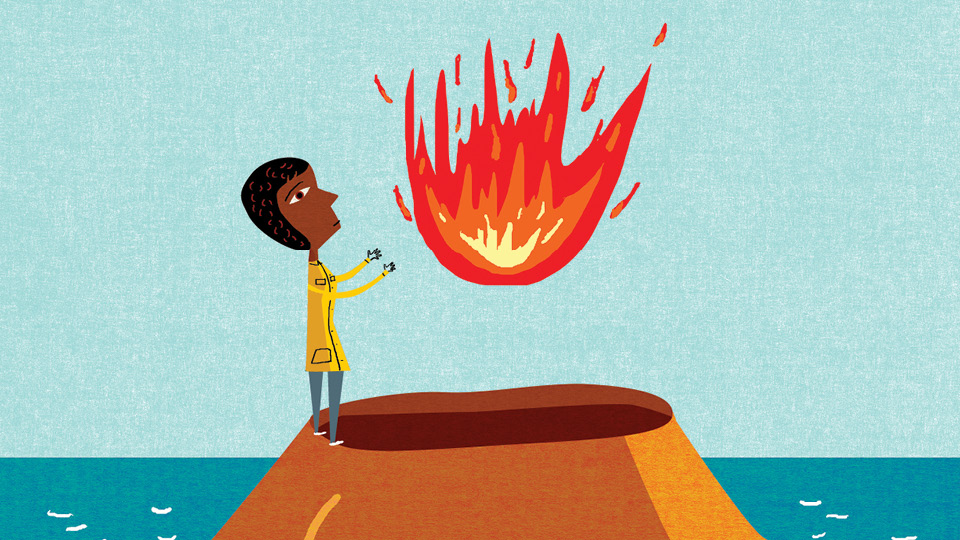by Imani Guest '18
Last summer I spent two months in the middle of the Pacific Ocean while participating in the Earth Science on Volcanic Islands Summer Research Program at the University of Hawaii. Conducting research with one of the world’s top volcanologist, Dr. Michael O. Garcia, and exploring the island by land and sea changed my life.
When I arrived in Hawaii in July, I met students from all over the country who had also been chosen for the program. Before we began our research, we traveled to the Big Island and walked on the active flows of Kilauea with state volcanologist Bruce Houghton. Now, everyone knows that lava is hot, but you will never know how hot until you are near it. It felt as though my eyebrows were being singed off my face, and I was standing 15 feet from the flows!
Returning from the Big Island to the island of Oahu, I began my research project, which consisted of procuring and studying samples of mantle xenoliths (foreign rocks brought up from the Earth’s mantle via volcanos) from Salt Lake Crater. I used these analyses to contribute to a larger interdisciplinary project that is aiming to determine the thermal history of the upper mantle in Honolulu. Through my work on the project, I learned how to operate a JEOL Electron Probe Microanalyzer (which is just as complicated and tedious as the name suggests).
Most days after work, I took the bus down to Waikiki with my fellow cohort to lounge on the beach or enjoy the nightlife. Other days, we went on hikes or traveled to different parts of the island that we had never seen before. No matter how much I worked each day, I always made time to unwind and enjoy the Hawaiian sun.
On the weekends, the program directors organized special trips for us. We took a three-day research cruise aboard the R/V Kilo Moana to better understand the formation of a submarine volcanic ridge called Pa‘uwela Ridge. Although the cruise was brief, it opened my eyes to marine geology. During four-hour shifts, we collected bathymetry data (depth of the water) and then dredged rocks from the volcanic ridge at the bottom of the seafloor. Bringing up these rocks — millions of years old but never seen by humans — was simply amazing.
We also visited the Pacific Tsunami Warning Center, where we witnessed an earthquake light up the monitors and observed the protocols workers go through in case of a subsequent tsunami.
As the research program came to an end, I wrote my report and constructed my poster for a presentation held at the University of Hawaii. Although I’m back in Lawrenceville for my senior year, my time in The Aloha State continues to impact me. The experience I gained in those two short months has proven to be very valuable as a prospective graduate student, and now I must make the decision of where I want to continue my studies as a future geologist.

